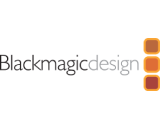Blackmagic Design Helps Produce ‘Live on the Lanes’ Bowling Series on Facebook Live
Story Highlights
Blackmagic Design announced that New York City based production company Live X used a full Blackmagic Design workflow, including URSA Broadcast, ATEM 4 M/E Broadcast Studio 4K, and Micro Studio Camera 4K, to create and live stream this summer’s Live on the Lanes game show series for the world’s largest ten pin bowling center operator, Bowlero Corporation.
 As a full-service design, production and broadcast company, Live X worked with its client So They Went Productions to create the series for Bowlero Corporation’s Bowlero brand. With more than 300 bowling centers around the country, operating under four bowling brands, Bowlero provides fun for all ages, including immersive and interactive entertainment like blacklight bowling, arcades, laser tag, and over the top culinary creations.
As a full-service design, production and broadcast company, Live X worked with its client So They Went Productions to create the series for Bowlero Corporation’s Bowlero brand. With more than 300 bowling centers around the country, operating under four bowling brands, Bowlero provides fun for all ages, including immersive and interactive entertainment like blacklight bowling, arcades, laser tag, and over the top culinary creations.
To appeal to today’s younger generation, Live X produced a five episode game show, Live on the Lanes, streamed directly to Facebook Live. Sarah Pribis, one of the hosts of the popular trivia game HQ served as the host of Live on the Lanes. Each episode had more than 500,000 viewers, and in addition to producing the series, Live X engaged viewers at home by having them participate in the game show to win cash prizes.
Lead producer and cofounder at Live X, Corey Behnke, knew it would be a unique challenge to shoot this series, as the team wanted to get as close to the two lanes of action as possible and also needed to maintain a small overall footprint. Corey decided to use five Micro Studio Camera 4Ks, two of which were positioned to shoot the lanes and two on the pins, so they could capture each strike, gutter ball, and everything in between. One Micro Studio Camera 4K captured the group of players as they watched the action and waited for their turn.
He also incorporated three URSA Broadcast cameras, two of which served as handheld main action cameras, with the third on a tripod capturing the host, equipped with a teleprompter and an URSA Viewfinder. “We loved using the URSA Broadcast in a way that it was meant to be used,” says Behnke. “For a live event like a game show broadcast on Facebook Live, the combination of the URSA Broadcast and the ATEM was perfect. Once you have control set up, you can manage everything from the front bench which is critical in a live situation.”
Live X used an ATEM 4 M/E Broadcast Studio 4K, controlled using ATEM 1 M/E Advanced Panel, with built-in DaVinci Resolve style color wheels to simultaneously color correct and control all of the cameras in real time. They also used the Live X custom graphics engine which was keyfilled into the switcher. “It was so helpful to be able to use the ATEM that way. That allowed us to show the scoreboard, the lower third, and the bowling animations. The ability to do key fill with the ATEM was game-changing.”
“Because of the ATEM, we have tally on the URSA Broadcasts, which is very helpful,” says Behnke. “And because of the 2/3 inch sensor size when using 4K B4 mount on the URSA Broadcasts, it was easily to outfit them with lenses, whether we already had them or rented them. 2/3 is pretty ubiquitous in the industry, so that’s really helpful.”
Nine HyperDeck Studio Pros were used to record the feeds from each camera as well as the overall program output. Live X also sent a program feed out of the ATEM 4 M/E Broadcast Studio 4K through two Teranex Mini SDI Distribution 12G units, which allowed them to send the feed to each of the eight cameras, giving them CCU control. Corey also used two SmartView 4K monitors to monitor the program feed out of the ATEM 4 M/E Broadcast Studio 4K.
“These products are made for live,” he continues. “It’s easy to match the cameras, and everything works together without additional control panel combinations. Another big reason we’ve chosen Blackmagic Design is to future proof for 12G-SDI. The internet is higher resolution than television, and our clients want 1080p30, which is how we shot Live on the Lanes. Our clients don’t necessarily need 4K yet, but they will, and it’s great that we’re ready.”
